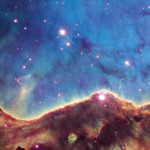Show Menu
Hubble
-
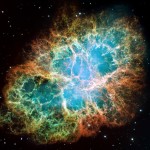
-
DECEMBER 1, 2005: The Crab Nebula is a six-light-year-wide expanding remnant of a star’s supernova explosion. Japanese and Chinese astronomers recorded this violent event nearly 1,000 years ago in 1054, as did, almost certainly, Native Americans. This composite image was assembled from 24 individual exposures taken with the NASA Hubble Space Telescope’s Wide Field and Planetary Camera 2 in October 1999, January 2000, and December 2000. It is one of the largest images taken by Hubble and is the highest resolution image ever made of the entire Crab Nebula.
http://hubblesite.org/newscenter/archive/releases/2005/37/
-
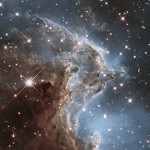
-
Pillars in the Monkey Head Nebula
Hubble
http://hubble25th.org/images/8
-
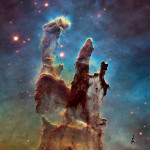
-
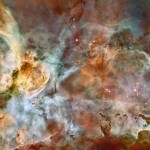
-
Hubble’s view of the Carina Nebula shows star birth in a new level of detail. The fantasy-like landscape of the nebula is sculpted by the action of outflowing winds and scorching ultraviolet radiation from the monster stars that inhabit this inferno. In the process, these stars are shredding the surrounding material that is the last vestige of the giant cloud from which the stars were born. The immense nebula is an estimated 7,500 light-years away in the southern constellation Carina the Keel (of the old southern constellation Argo Navis, the ship of Jason and the Argonauts, from Greek mythology). This image is a mosaic of the Carina Nebula assembled from 48 frames taken with Hubble Space Telescope’s Advanced Camera for Surveys. The Hubble images were taken in the light of ionized hydrogen. Colour information was added with data taken at the Cerro Tololo Inter-American Observatory in Chile. Red corresponds to sulfur, green to hydrogen, and blue to oxygen emission.
-
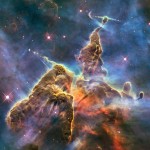
-
Hubble Captures View of ‘Mystic Mountain’
http://hubblesite.org/newscenter/archive/releases/2010/13/image/a/
-
